Instrukcja EMOS E8236 Stacja pogodowa
Potrzebujesz instrukcji dla swojego EMOS E8236 Stacja pogodowa? Poniżej możesz bezpłatnie obejrzeć i pobrać instrukcję w formacie PDF w języku polskim. Ten produkt ma obecnie zadane 5 pytania, 0 komentarzy i 0 głosów. Jeśli nie jest to podręcznik, którego szukasz, skontaktuj się z nami.
Czy Twój produkt nie działa, a w instrukcji obsługi brakuje rozwiązania Twojego problemu? Udaj się do Repair Café, gdzie naprawisz swój sprzęt za darmo.
Instrukcja
Loading…

Loading…
Ocena
Podziel się z nami swoją opinią na temat EMOS E8236 Stacja pogodowa i oceń urządzenie. Chcesz podzielić się swoimi doświadczeniami z tym produktem lub zadać pytanie? Zostaw komentarz na dole strony.Więcej o tej instrukcji
Rozumiemy, że miło jest mieć papierową instrukcję obsługi EMOS E8236 Stacja pogodowa. Zawsze możesz pobrać instrukcję z naszej strony internetowej i wydrukować ją samodzielnie. Jeśli chcesz otrzymać oryginalną instrukcję, zalecamy skontaktowanie się z EMOS. Być może będą w stanie dostarczyć oryginalną instrukcję. Szukasz instrukcji swojego EMOS E8236 Stacja pogodowa w innym języku? Wybierz preferowany język na naszej stronie głównej i wyszukaj numer modelu, aby sprawdzić, czy jest on dostępny.
Dane techniczne
| Marka | EMOS |
| Model | E8236 |
| Kategoria | Stacje pogodowe |
| Typ pliku | |
| Rozmiar pliku | 1.37 MB |
Wszystkie podręczniki dla EMOS Stacje pogodowe
Więcej podręczników Stacje pogodowe
Często zadawane pytania dotyczące EMOS E8236 Stacja pogodowa
Nasz zespół wyszukuje przydatne informacje na temat produktu i udziela odpowiedzi na często zadawane pytania. Jeśli znajdziesz nieścisłości lub błędy w naszych odpowiedziach na pytania, poinformuj nas o tym przy pomocy naszego formularza kontaktowego.
Moja stacja pogodowa przewidywała, że będzie padać, ale tak się nie stało. Co jest tego powodem? Zweryfikowany
Prognoza stacji pogodowej opiera się na ciśnieniu powietrza. Ogólnie niskie ciśnienie oznacza złą pogodę, a wysokie ciśnienie oznacza dobrą pogodę. Możliwe, że wzór pogody rozwija się inaczej niż przewiduje ciśnienie powietrza.
To było pomocne (1404) Czytaj więcejJaka jest najlepsza lokalizacja stacji pogodowej i jej czujników? Zweryfikowany
Sama stacja pogodowa jest umieszczona wewnątrz i należy ją trzymać z dala od źródeł ciepła, takich jak kuchnia, okna czy urządzenia elektryczne. Oddzielny czujnik temperatury zewnętrznej należy umieścić w cieniu i co najmniej 1,25 m nad ziemią. Czujnik deszczu należy umieścić na otwartej przestrzeni, gdzie zawsze może zbierać deszcz. Czujnik wiatru należy również umieścić na otwartej przestrzeni, gdzie wszelkie przeszkody wpływają na wiatr.
To było pomocne (334) Czytaj więcejMoja stacja pogodowa ma miernik deszczu, czy może również mierzyć ilość opadów śniegu? Zweryfikowany
Niektóre deszczomierze są wyposażone w element grzejny, który sprawia, że śnieg topnieje i umożliwia jego pomiar. Bez elementu grzejnego deszczomierz zapycha się i nie można wykonać pomiaru.
To było pomocne (235) Czytaj więcejBateria w moim urządzeniu jest utleniona, czy nadal mogę z niej bezpiecznie korzystać? Zweryfikowany
Ja, urządzenie nadal może być bezpiecznie używane. Najpierw wyjmij utlenioną baterię. Nigdy nie używaj do tego gołych rąk. Następnie wyczyść komorę baterii wacikiem zamoczonym w occie lub soku z cytryny. Pozostaw do wyschnięcia i włóż nowe baterie.
To było pomocne (234) Czytaj więcejCzy mogę zostawić wymienną baterię w urządzeniu na dłuższy czas? Zweryfikowany
Wymienne baterie mogą pozostawać w urządzeniu przez długi czas, jeśli urządzenie jest używane. Gdy urządzenie jest przechowywane przez długi czas, zaleca się wyjęcie baterii, aby zapobiec utlenianiu.
To było pomocne (234) Czytaj więcej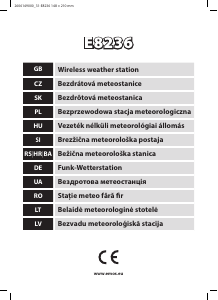


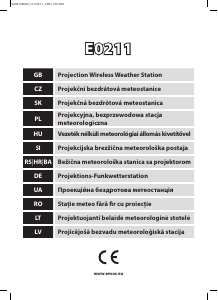
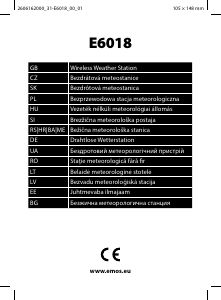
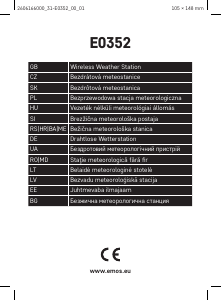
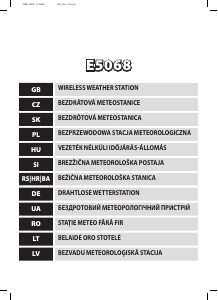
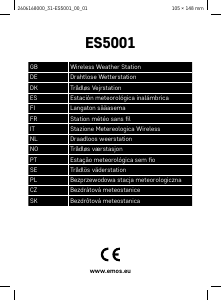
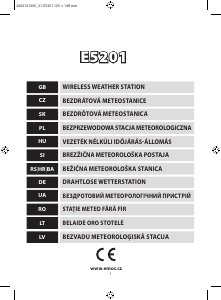
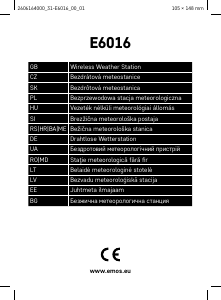
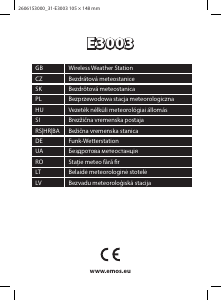
Dołącz do dyskusji na temat tego produktu
Tutaj możesz podzielić się swoją opinią na temat EMOS E8236 Stacja pogodowa. Jeśli masz pytanie, najpierw dokładnie przeczytaj instrukcję. Zapytanie o instrukcję można złożyć za pomocą naszego formularza kontaktowego.